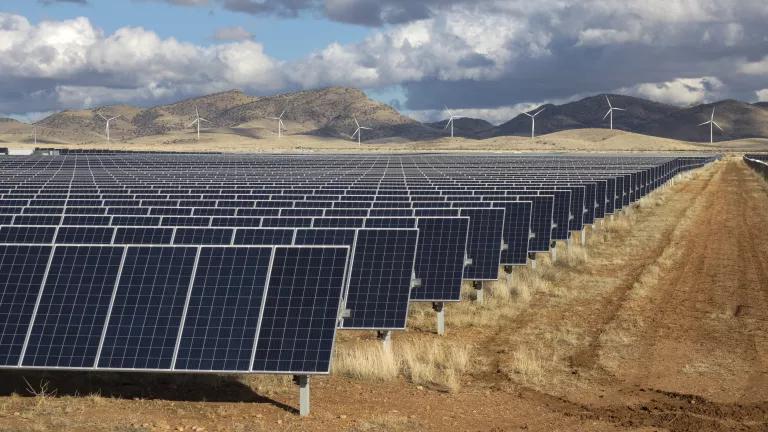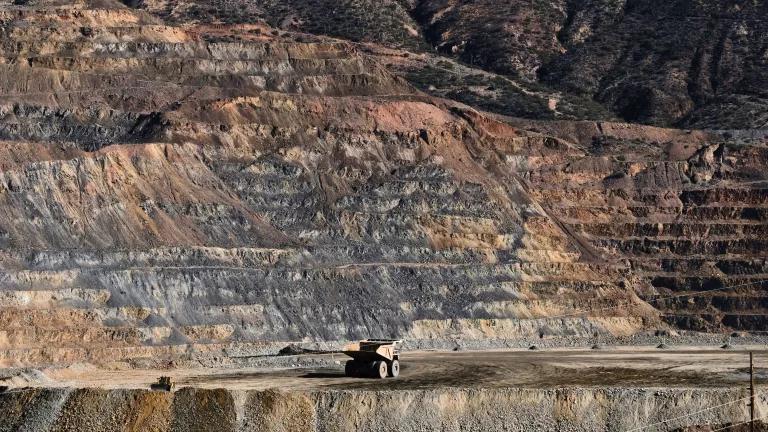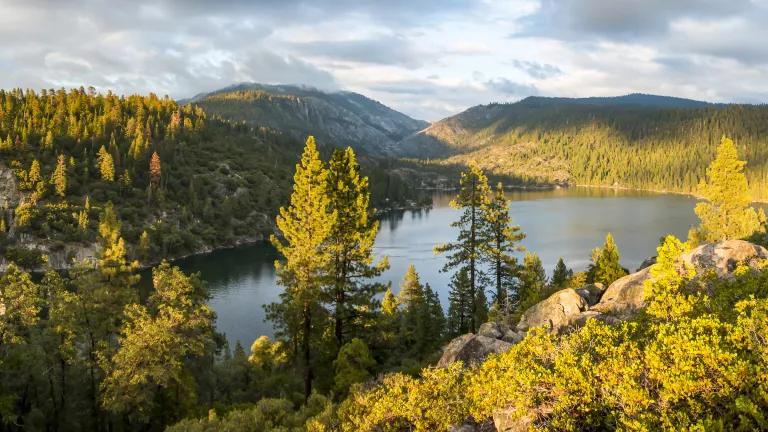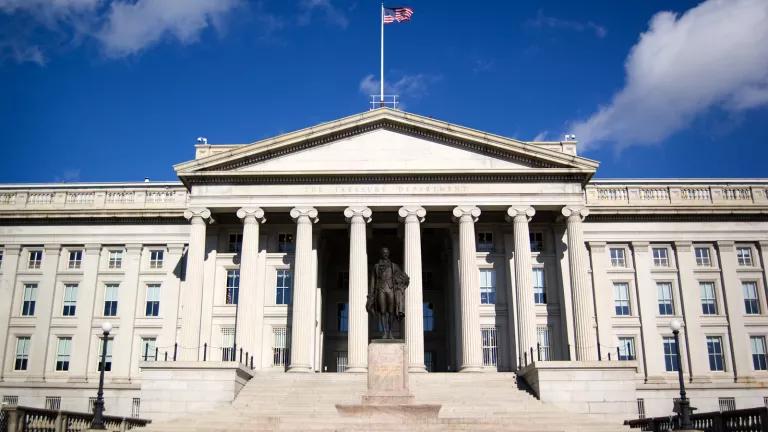Public Lands and Renewable Energy in the Spotlight
This week, lawmakers in the House of Representatives are giving serious attention to the opportunities and challenges of siting renewable energy projects and their associated transmission infrastructure on public lands.

Solar and wind power outside Wilcox, Arizona.
This week, lawmakers in the House of Representatives are giving serious attention to the opportunities and challenges of siting renewable energy projects and their associated transmission infrastructure on public lands.
In December 2020, Congress set an ambitious 25-gigawatt renewable energy siting goal for land managers in the Department of the Interior to hit by 2025. Soon after, the incoming Biden administration set an equally ambitious goal for offshore wind energy, directing regulators to site at least 30-gigawatts of new offshore wind projects by 2030.
Meeting these targets will not only require an all-hands-on-deck effort by federal, Tribal, state, and local governments, but also cooperation and buy-in from developers, utilities, local communities, and other stakeholders. How to bring all these parties productively to the table to advance this critical clean energy build out as quickly as possible is a major focus for the House Natural Resources Committee, which has jurisdiction over federal public lands and waters.
In a hearing focused on how to plan and build the transmission capacity we’ll need to move renewable energy from projects located on public lands and waters into the electricity grid, lawmakers heard from several experts, including NRDC’s own Yvonne McIntyre. Though opinions differed on how best to ensure we’re building the transmission infrastructure needed to modernize our electricity grid and increase its resilience to disasters and demand shocks, all agreed there is a well-established set of challenges facing transmission projects.
In short, the planning, siting, and permitting process is broken. The question is: how do we fix things now to ensure that the need for new clean energy generation and transmission is balanced with the equally critical need to conserve habitat and ecosystems that are strained by both development and climate change?
The tension inherent in this balancing act is an area that NRDC has worked on for years. We’ve long advocated for an approach dubbed “Smart from the Start,” which is a series of principles and practices that, when put into practice, has demonstrated that renewable energy generation and transmission can be successfully sited efficiently and in an environmentally responsible manner. Smart from the Start basically accomplishes two overarching goals:
- Ensures that proposed projects are sited in areas with lower levels of conflicts with environmental and cultural values, and the highest potential for delivering benefits like generation capacity and grid resilience.
- Ensures that permitting can move forward with greater predictability and certainty and without un-necessary delays generated by resource conflicts
A piece of legislation that embraces aspects of this Smart from the Start approach and addresses the onshore wind, solar, and geothermal project siting part of this puzzle is also being considered during a markup before the Natural Resources Committee this week. The Public Land Renewable Energy Development Act (PLREDA) is a bipartisan proposal that NRDC has supported across several congresses. This year, with the redoubled focus on siting new renewable energy projects on public lands, the need for a law like PLREDA is more pressing than ever.
Why? Because the laws, rules, regulations, and other guidance documents that land managers currently use to permit renewable energy projects and transmission on public lands were designed for a different era and to facilitate different kinds of development. PLREDA brings this process into the 21st Century by:
- Establishing criteria for identifying appropriate areas for renewable energy development using the 2012 Western Solar Plan as a model. Key criteria to be considered include access to transmission lines and likelihood of avoiding or minimizing conflict with wildlife habitat, cultural resources, and other resources and values.
- Requiring developers commit to enhance natural resource conservation and stewardship via payments that will establish a Renewable Energy Resource Conservation Fund that would support expanding recreational access, conservation and restoration work and other important stewardship activities.
- Improving access to federal public lands for recreational uses via funds made available for preserving and improving access, including enhancing public access to places that are currently inaccessible or restricted.
- Distributing revenues raised from renewable energy development on public lands in an equitable manner that benefits local communities near new renewable energy projects and supports the efficient administration of permitting requirements.
Our vast public lands must play a variety of roles in enhancing the lives of people living in this country as well as helping mitigate the impacts of climate change. Conserving critical resources that will ensure ecosystem resilience, enhance carbon uptake and storage, and protect biodiversity must remain top of mind for our federal land managers. At the same time, there is little question that these same lands provide some of the best areas for renewable energy generation in the country. While the past provides many examples of what not to do when it comes to development in these places, it has also provided a roadmap for how we can do better. For both new energy generation and new energy transmission, approaching the siting and permitting of new projects in a careful, inclusive, and holistic manner will lead to better outcomes on the ground and more clean energy powering our decarbonized economy well into the future.




